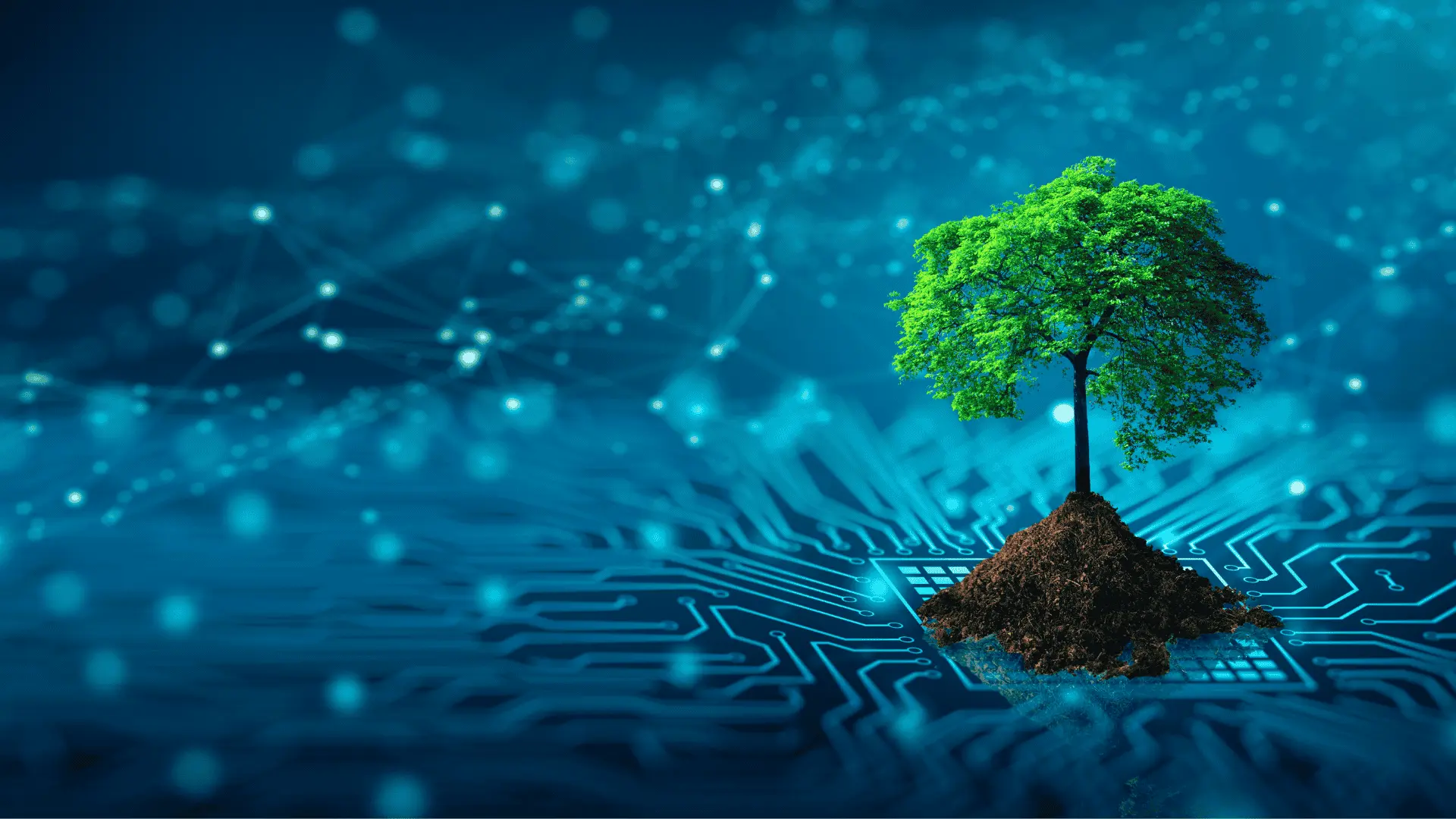Earth Day 2025: How Corporate Responsibility Drives Sustainable E-Waste Solutions
According to the UN’s Global E-waste Monitor, e-waste is growing five times faster than formal recycling and is predicted to reach 82 metric tons by 2030. A significant portion of e-waste comes from corporate IT hardware, which is frequently replaced and often not handled securely or disposed of responsibly
Governments are responding with stricter regulations on recyclability, product durability, and end-of-life tracking. Companies must rethink how they purchase, manage, and dispose of electronic equipment.
In this article, we’ll discuss how corporations can adopt sustainable e-waste solutions through refurbishment, resale, and responsible recycling.
How Corporate Usage Is Driving E-Waste Footprint
Companies are among the largest users of IT and telecom hardware such as laptops, routers, network servers, printers, storage systems, POS terminals, and peripherals. These assets are often replaced every 2–3 years due to refresh cycles, employee turnover, or software compatibility.
A large majority of this discarded equipment goes to landfills or is exported without recovery. According to BCG, the U.S. discards over $10 billion worth of electronics annually.
Many companies use unverified recyclers, donate equipment without data sanitization, or lack internal protocols for refurbishment or resale. All of this contributes to high e-waste generation in the U.S. and worldwide.
The Rise of Circular Economy: Reduce, Reuse, Recycle
For many decades, companies have adopted linear product models: make, sell, and discard. A circular economy, or “circularity,” is a sustainable model to combat the rising threat of e-waste through refurbishing, reselling, and recycling.
This model mainly focuses on three main components:
- Product life extension (through repair, refurbishment, resale)
- Resource recovery (through recycling and closed-loop supply chains)
- Service-based models (like asset-as-a-service or managed subscriptions)
Rather than discarding entire products, recycling extracts valuable materials and keeps them in the economy for future use. This reduces the environmental impact of producing new raw materials.
How Can Companies Adopt Sustainable E-Waste Solutions
Here’s how businesses can adopt sustainable e-waste solutions:
Refurbish: Extending Product Lifespans
Most business electronics, from laptops and monitors to servers, are replaced long before their functional end. Refurbishing involves cleaning, updating, and repairing outdated assets to extend their lifecycle and usability.
Refurbished assets can be reallocated internally, resold to secondary markets, or donated with proper data sanitization. This can help companies battle e-waste and make the most out of their IT assets.
Resell: Give Electronics a Second Life
Many functional assets categorized as “e-waste” can be resold through secondary markets rather than discarded prematurely.
Reselling extends the useful life of equipment, reduces the environmental cost of producing new assets, and supports circular economy goals. Resale is also a sustainability tactic to recover value and offset costs for new IT equipment.
Responsibly Recycle: Closing the Loop
When electronics reach end-of-life (EoL), recycling can reduce environmental harm. However, much of the world’s e-waste is handled informally or shipped across borders without oversight, leading to data exposure, unsafe working conditions, and material loss.
Responsible recycling means partnering with certified recyclers who follow strict environmental, health, and data security standards. These providers have certifications like R2 (Responsible Recycling) and e-Stewards to dismantle devices, handle hazardous components, and recover valuable materials.
Benefits of Sustainable E-Waste Solutions
Here are some benefits of adopting sustainable e-waste solutions:
Recovers Hidden Value
Most discarded electronics contain high-value materials such as gold, copper, and palladium. Yet $4B worth of these raw materials are lost annually in retired computer equipment in the U.S. alone.
Refurbishing or recycling allows you to redeploy, resell, or donate these assets. This reduces replacement costs and can even create new revenue streams through resale in secondary markets.
Improves Data and Brand Security
Sustainable e-waste solutions improve data and brand security by following strict handling protocols, such as those outlined in the R2v3 standard, when retiring IT assets. Certified refurbishers and recyclers use verified data sanitization methods such as secure wiping, degaussing, or physical destruction to permanently remove sensitive information before reuse or disposal.
This reduces the risk of data breaches, intellectual property leaks, and compliance violations.
Full Visibility and Accountability
Recycling through certified processes provides traceable documentation and chain-of-custody controls. This gives you visibility and accountability over how retired assets, and the data on them, are managed.
Cut Emissions
According to BCG, Recycled copper has 3–5x lower emissions than virgin copper mining. Sustainable e-waste solutions cut emissions by reducing the need to manufacture new assets. When companies refurbish or recycle electronics, they avoid the carbon-heavy processes of mining, refining, and production.
Challenges in Implementing Sustainable E-Waste Solutions
Here are some challenges companies face in implementing e-waste solutions:
- Lack of asset tracking: Many companies rely on manual spreadsheets to track their IT hardware inventory. This often leads to incomplete or outdated records, making it difficult to plan for the responsible disposal or refurbishment of devices when they reach end-of-life.
- Limited awareness of recycling: Some companies default to local scrap vendors or general recyclers, unaware that only certified providers follow strict environmental and data protection standards. This limits recovery potential and increases compliance risks.
- Data security concerns: Outdated equipment often contains sensitive information. Companies worry about data breaches or non-compliance with privacy laws. They prefer storing them instead of sending them out.
- High upfront costs: Recycling or refurbishing equipment can seem expensive, especially when budgets are tight.. However, many companies are unaware of ITAD services that can help offset the cost of new equipment through secure resale and asset recovery.
- Shorter refresh cycles: Some IT teams refresh equipment every 2–3 years. Even if devices are still functional, they’re decommissioned early, contributing to unnecessary waste. In industries like finance, healthcare, and technology, where performance, compliance, or security standards demand regular upgrades, refresh cycles are often necessary. But without a responsible plan for managing retired assets, valuable equipment ends up underutilized or improperly discarded.
Here’s a step-by-step guide on how you can adopt responsible e-waste solutions this Earth Day:
1. Audit Your IT Assets
Start with a full inventory of active, unused, and end-of-life assets. Knowing what your company owns and where it’s located helps identify what needs to be refurbished, resold, or recycled. Look for assets in storage or lightly used equipment that’s ready for internal redeployment.
2. Set Internal Protocols for Refurbishment and Reuse
Create clear guidelines for assessing whether assets can be repaired, upgraded, or reassigned. Extend refresh cycles where possible and document refurbishment processes to track ESG contributions.
3. Resell Through Verified Channels
Work with vetted partners or marketplaces to resell functioning assets into secondary markets. This turns sunk hardware costs into recoverable value while supporting product circularity.
4. Partner with ITAD Providers
IT Asset Disposition (ITAD) providers closely inspect and categorize your equipment to determine whether it should be recycled, refurbished, or resold. They handle data sanitization, provide chain-of-custody documentation, and help you track asset disposition for ESG reporting and compliance.
Inteleca audits your IT assets to recover value and recycle responsibly while providing maximum monetary returns to clients. Our team of in-house experts manages your entire asset lifecycle, from on-site pickup and secure transportation. We also handle your data securely through detailed asset tracking, certified data sanitization, and compliance auditing.
Final Thoughts
This Earth Day, companies should rethink how they manage the electronics they use every day. By embracing circular practices like refurbishment, resale, and responsible recycling, your organization can reduce waste, recover value, and protect data.
Implementing sustainability initiatives helps drive corporate responsibility and reduce e-waste. It’s also an opportunity for businesses to save money and offset ITAD costs by remarketing IT equipment in secondary markets.
Inteleca securely recycles outdated hardware through certified processes and refurbishes reusable assets for resale through our secondary marketplace.
Schedule a call with our team today to learn more.



